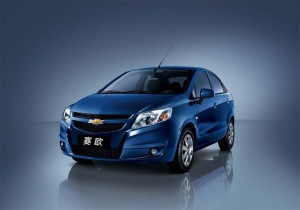China has a way of delivering some surprises. Just ask former General Motors Chairman Jack Smith.
It was just over a decade ago when he announced plans to form a joint venture with the local maker, Shanghai Automotive Industry Consortium, and open an assembly plant. In a land known as “the bicycle kingdom,” the landscape was “littered with casualties,” warned one major newspaper. It shouldn’t have bothered.
Last year, Chinese auto sales surged to 13.5 million, soaring past the U.S. to become the world’s largest national market. And GM went along for the ride, its own sales rocketing from just 32,000 when it opened its first showrooms, in 1999, to 1.83 million, last year. That makes China the maker’s second-largest market, “by a considerably wide margin,” said Kevin Wale, president of GM China Group.
Due to a curious historical precedent, GM launched operations out of Shanghai under the Buick brand name – one of the reasons why it struggled to hang onto that division, while abandoning larger nameplates such as Pontiac and Saturn, during its recent bankruptcy. But the line-up is growing, GM now offering more than 30 models in China under not only the Buick but Cadillac, Chevrolet and Wuling umbrellas.
As with other foreign makers, Chinese rules have required GM to partner with local brands, most notably including Shanghai Automotive Industry Consortium, or SAIC. In a surprise move, the U.S. maker sold its partner an additional 1% stake, giving SAIC a controlling 51%, last year.
For his part, Wale insisted the venture is being run “exactly the same way as it was,” despite that shift. “In China, it’s about the nature of the relationship and how you make decisions,” rather than who has the controlling share, the executive contended, following a speech in Detroit, on Wednesday.
One thing is clear, GM is anticipating a bright future. Early on, the company was expecting a seemingly solid growth rate of about 9% annually, Wale said. In fact, it has seldom been out of the double-digits. The 2008 growth of 7.3% “was considered a down year,” he recalled.
And the future? The Chinese government has made it clear it sees the auto industry as a top national priority. It dumped significant incentives in the market throughout 2009 to resist the sort of downturn most of the rest of the world experienced.
As a result, Wale said, the future looks plenty bright. Over the next nine years, he forecast annual sales will climb another 13 million above 2009’s already explosive levels.
Of course, China has had a history of defying the soothsayers, but so far, when it comes to the auto industry, it always exceeds expectations. And with its middle class continuing to grow at a globally unprecedented rate, few would bet that GM’s forecast is anything but conservative.

